Dell Precision 3280 Compact Internal Hardware Overview
If we simply showed you this photo in the context of our Project TinyMiniMicro series, you might think this is a 1L Micro PC from Dell. Instead, it is taller, allowing for more components and cooling.
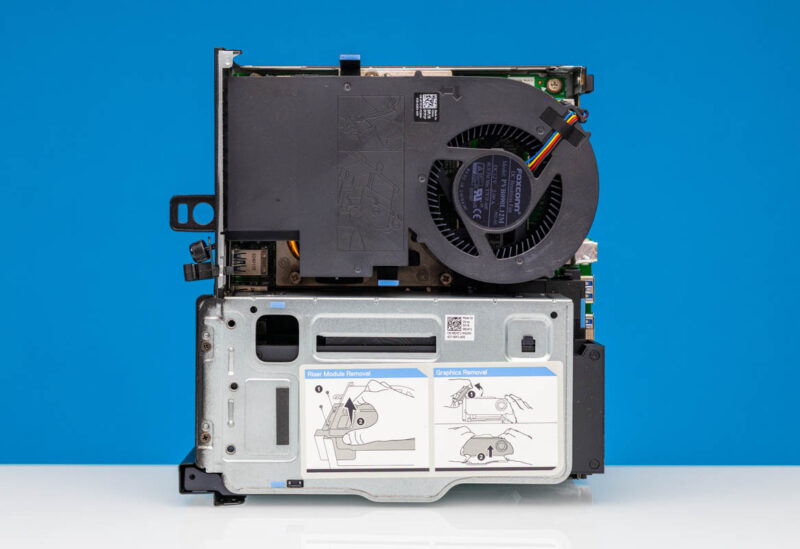
The CPU and memory fan shroud comes off without any tools.
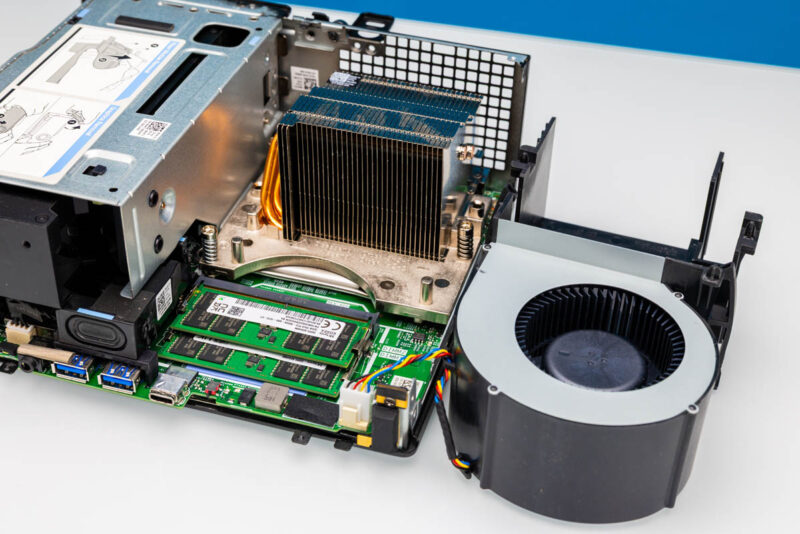
You can see the heatsink is much larger than on the Dell Precision 3260 Compact we reviewed.
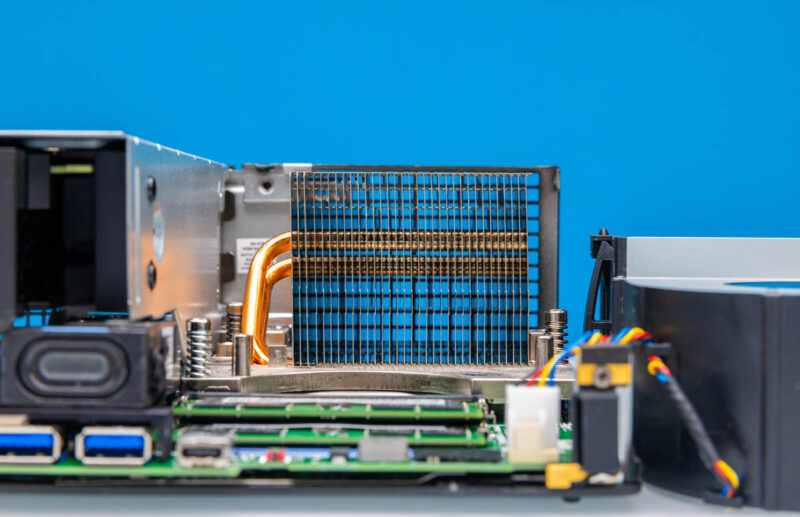
Next to the CPU, we get two DDR5 SODIMM slots. Our system came with 64GB (2x32GB) of non-ECC memory. We also tested the system with 2x 48GB and 2x 64GB configurations which are not supported, but worked for us.
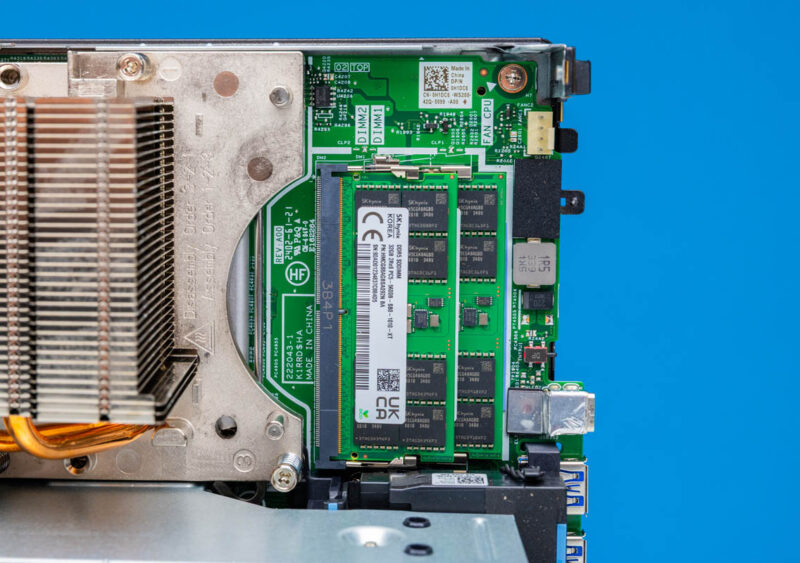
We did not have this option, but there is an optional ECC configuration as well with these parts with up to 2x 32GB ECC DDR5 SODIMMs from the factory.
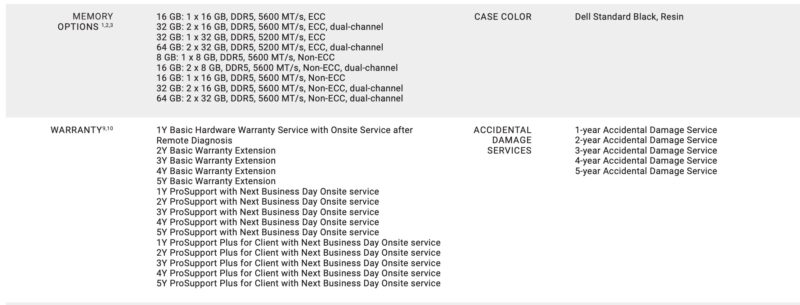
After the CPU and memory, the next step was removing the riser.
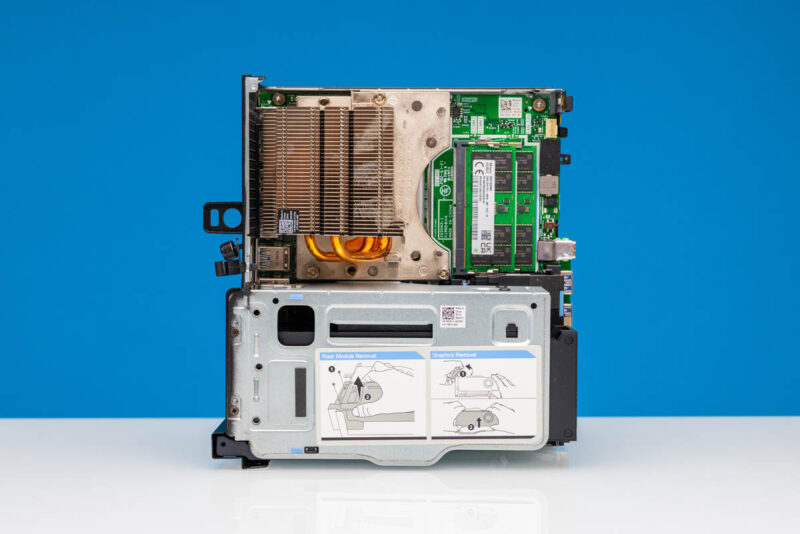
In the riser, we have a perfectly sized NVIDIA RTX 4000 Ada SFF dual slot card.

Here you can see the card neatly tucked in the riser. One small item here is that you need to remove two screws to get the card out. Hopefully in future generations this can be a fully tool-less riser.
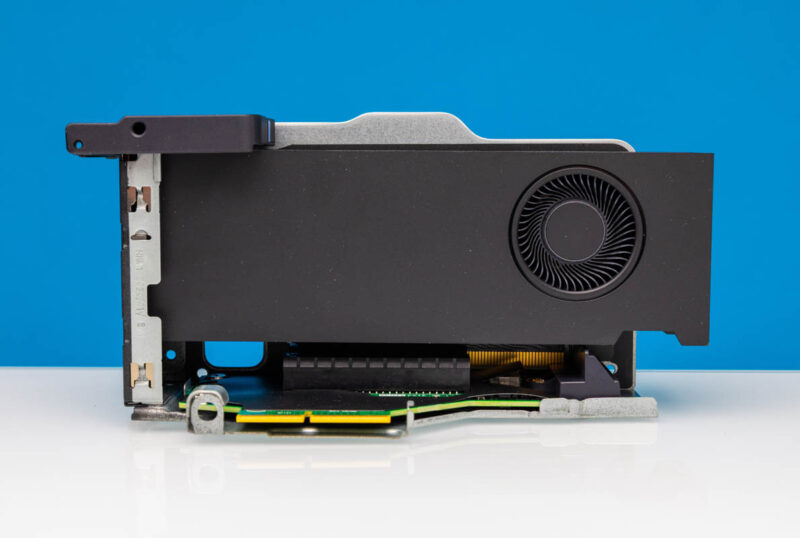
Here is the riser slot. If you are getting one of these systems, we highly suggest getting the riser.
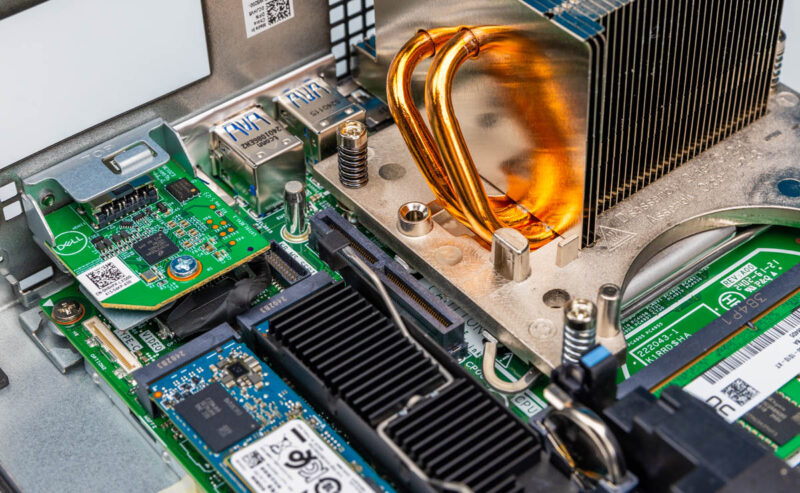
With the riser and the NVIDIA RTX 4000 Ada 20GB GPU removed, we can see the rest of the I/O expansion.
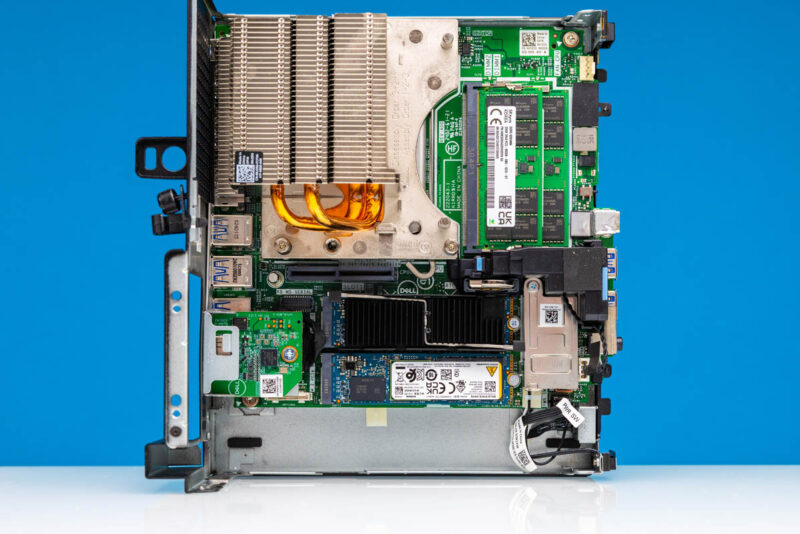
First, we can see the optional HDMI board.
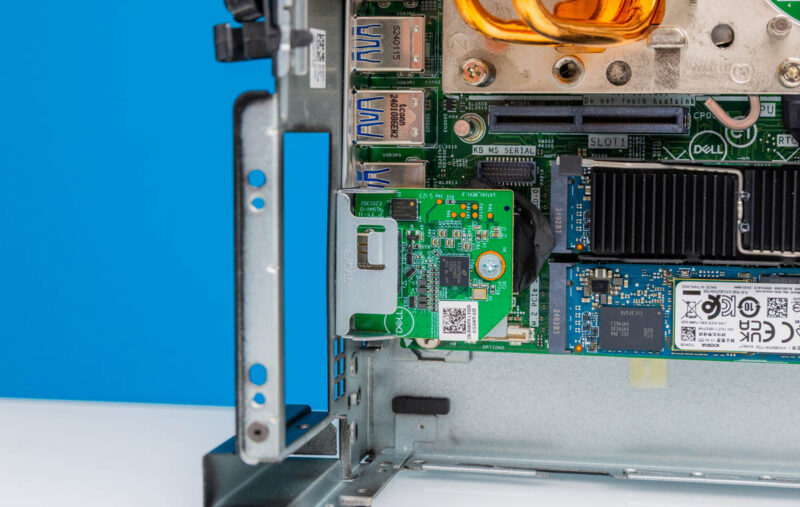
Then we can see two Kioxia NVMe SSDs. You can order up to 2x 4TB M.2 SSDs and even RAID 0 them for 8TB of total capacity. We are not sure why only one of the two came with a heatsink though.
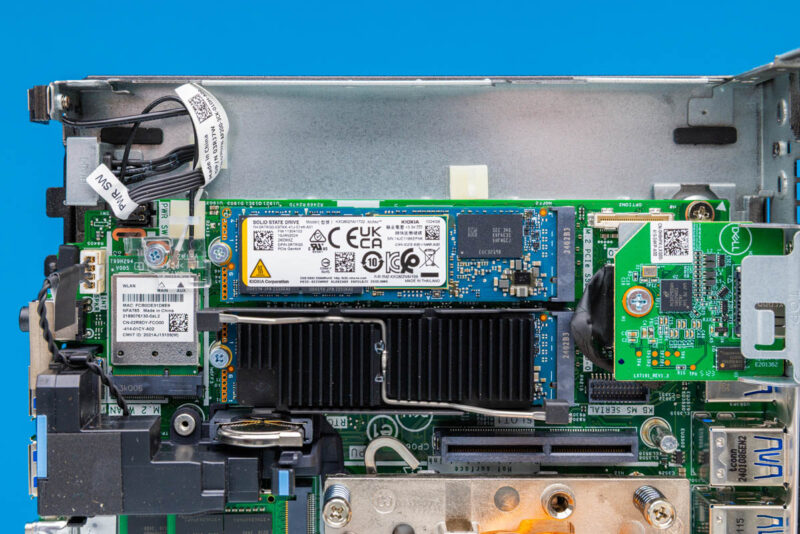
Under the WiFi shield, we can see the M.2 WiFi card. We were expecting an Intel AX211, but instead we have a Qualcomm NFA765 card. Some prefer the Qualcomm cards so it is notable that this is even an option.
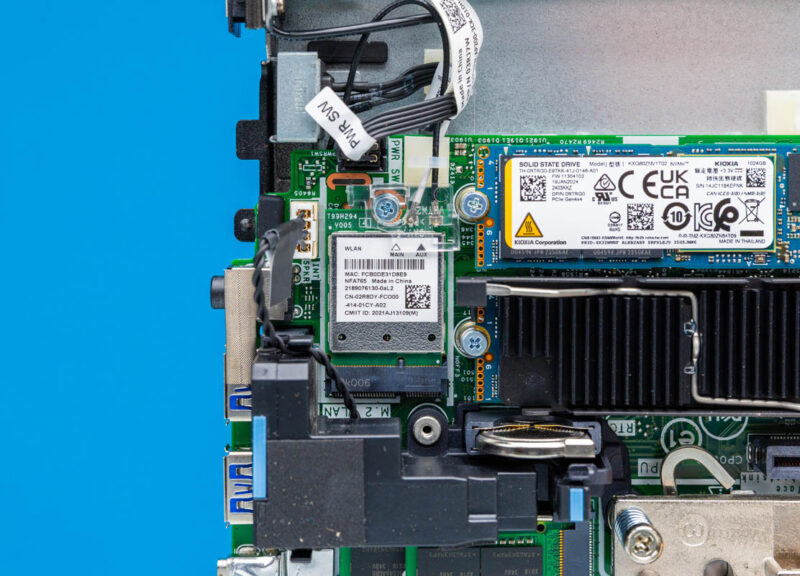
Perhaps the smallest feature is the tiny speaker inside the system.
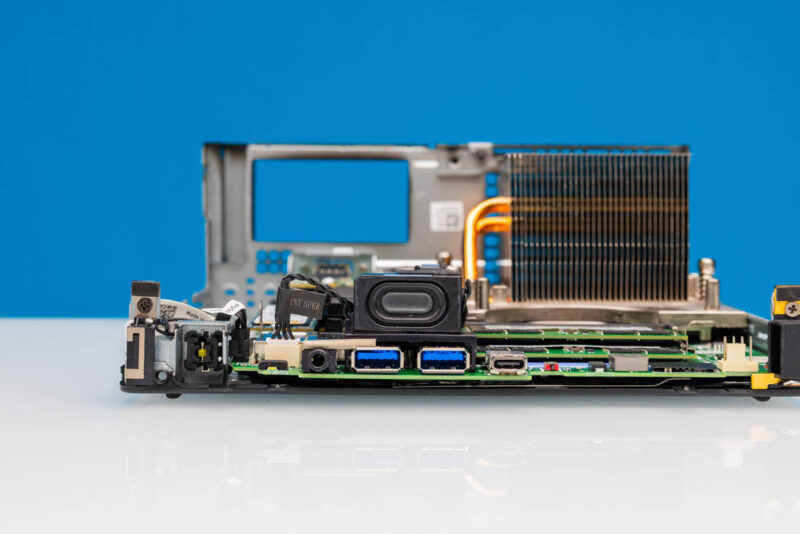
Next, let us see the performance.

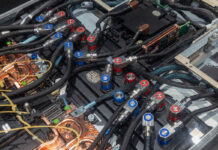
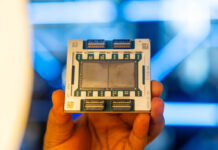

>Next to the USB ports we get a 1GbE Intel i219-lm port. We, of course, would prefer a 2.5GbE port standard, but this likely done to support Intel vPro management.
Both i225-LM and i226-LM provide 2.5G and vPro/AMT support.
They still have problems despite new hardware revisions, so that might be the actual reason why Dell chose to go with older 1G model.
Would have been nice to see a photo of the PCI riser without the NVIDIA card installed. I have zero interest in graphics or GPU computing but there are a number of other things I might like to install in this system, and a picture being worth a thousand words, it would make it much easier to see what’s going on there.
As I understand it, it’s only a single slot riser with space for a double wide card, is that right? Is there a two slot riser option?
@Matt
Dell has excellent documentation and you can see the riser photos there. I can’t paste a direct link but you can find it on their site: Precision 3280 CFF Owner’s Manual -> Removing and installing Customer Replaceable Units (CRUs) -> Intel E810 Ethernet network adapter -> Installing the Intel E810 Ethernet network adapter into the riser-card module.
It looks to be a dual x8 open-ended slot riser, but it has a proprietary slot on the motherboard.
I really missed seeing USB4 support, as well as a second, potentially 5 or 10Gbps NIC. These things really shouldn’t cost that much in 2025 and we’re talking about a workstation here. Random Chinese manufacturers can manage it, Framework can manage it on their desktop, so how come Dell is still stuck in the past? I do appreciate the PCIe expansion, but it’s worthless if I have to use it up for networking or extra connectivity.
Believe it or not, most enterprise networks use 1GbE ports for their clients (still). A use case for something above 1Gbps is completely valid, but Dell is too closely aligned with what corporate purchasing is requiring, and they don’t require it. Servers are a different matter.
For most network admins, they consider 1Gbps for a client as more than adequate.
So until Corporate USA starts buying faster ports from Cisco or whomever, this is what they make.
I’d argue the labeling on the USB ports is fine. the label sits between the two ports, so since they’re the same, it just covers both left and right of the label. Yea its different, but it makes sense to me.
I’m very unhappy to see that DELL gave up the Precision Rackstation 3930 1U with no replacement. The sales representative tried to fool me with 10 000 € rack models but the reason to own a 3930R was the capabilities with single core apps using an intel i9900k.
The more expensive models have much more RAM but perform poorly in single core use.